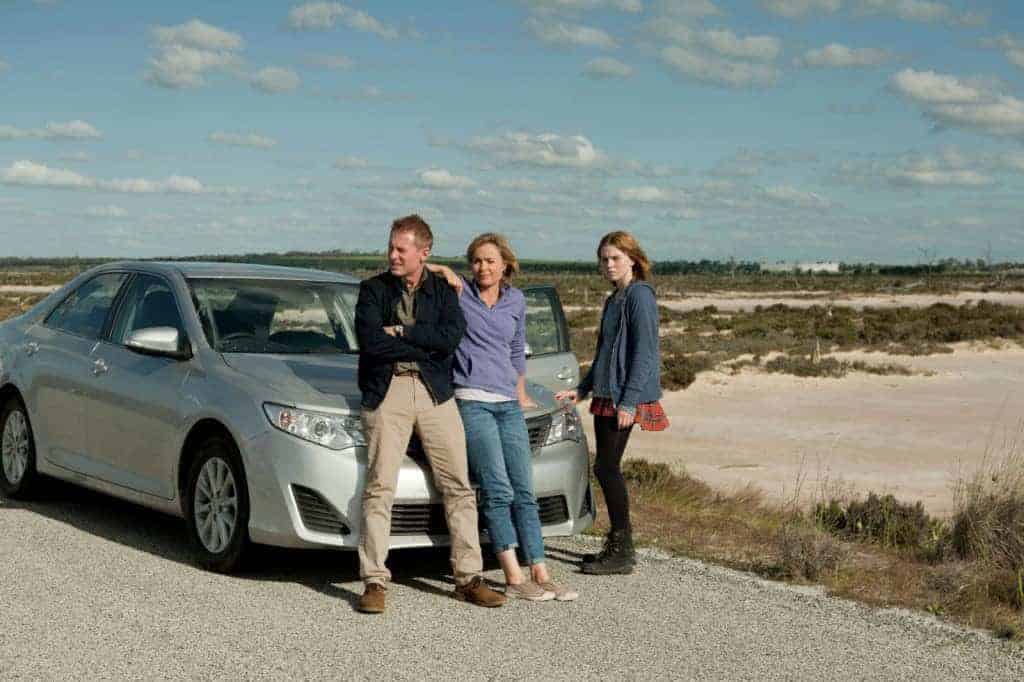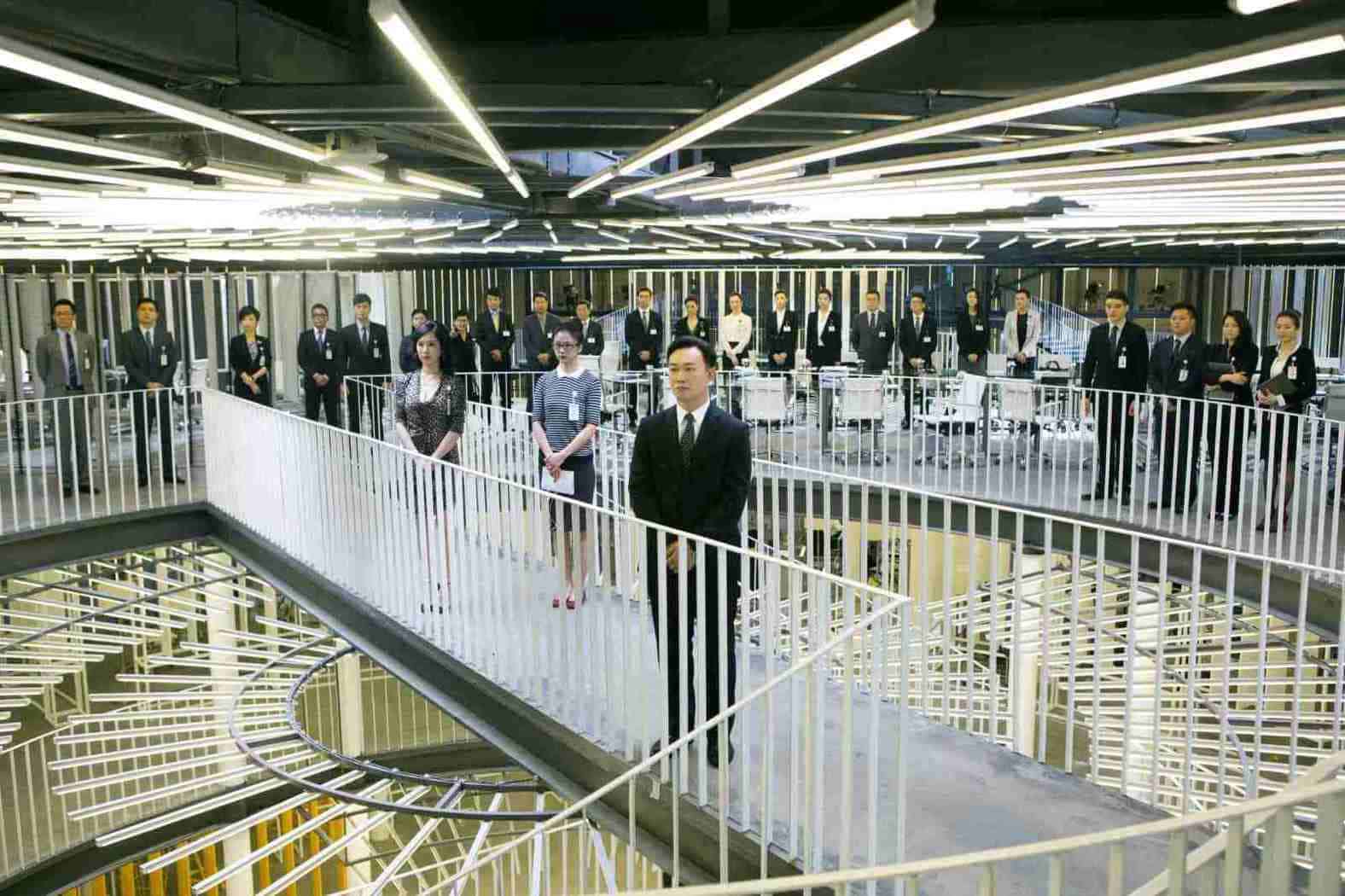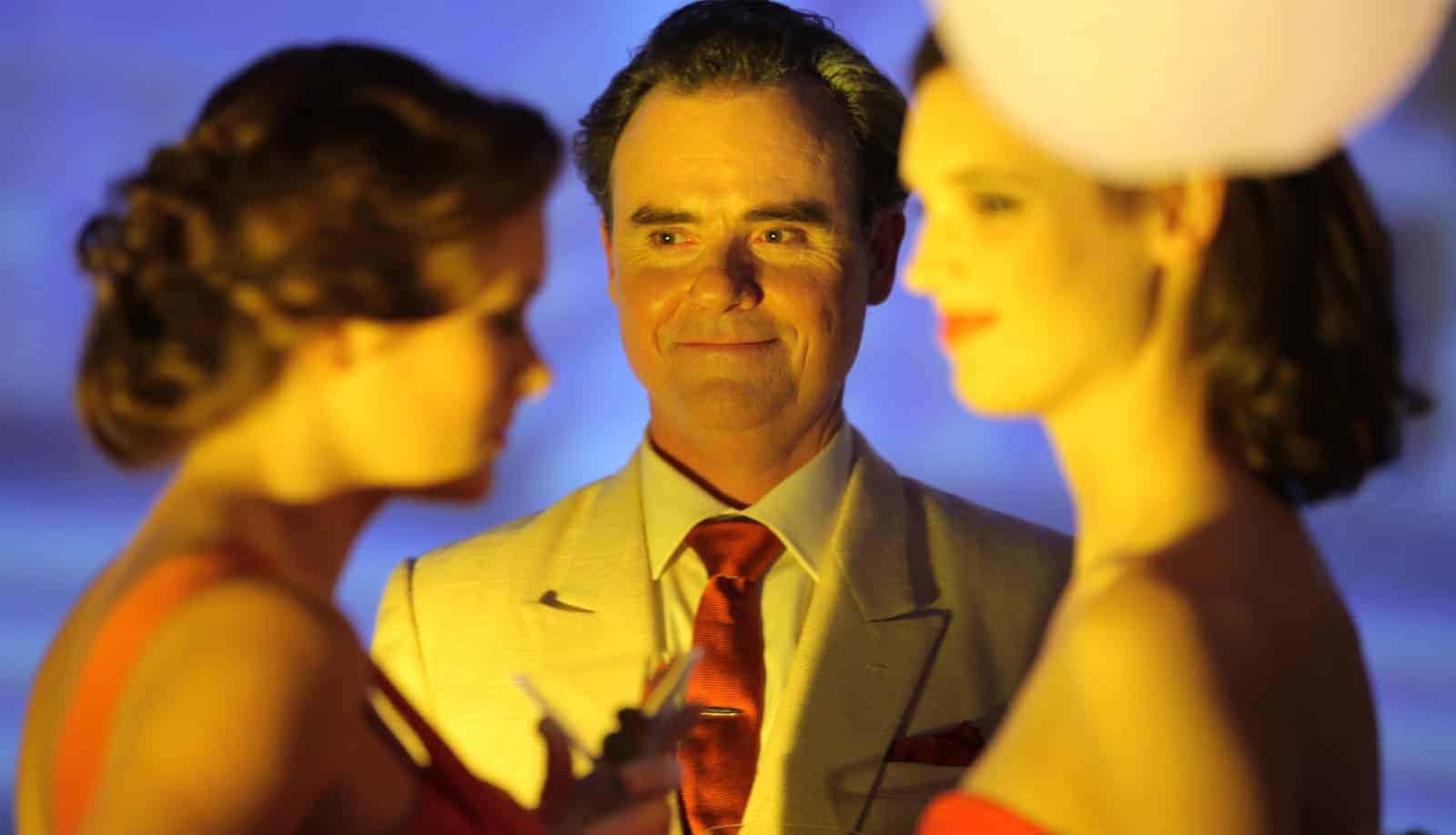Looking for Grace director Sue Brooks sat down at TIFF15 to discuss how she approached aesthetic, what inspired her to make the film, and the lack of funding for female-helmed films.

One of three films directed by women to screen in the inaugural Platform competition at the Toronto International Film Festival, Sue Brooks’ Looking For Grace is part drama, part comedy. Told through a series of vignettes, each from a different character’s perspective, the film opens with the story of the eponymous sixteen-year-old Grace (Odessa Young). She’s on a cross-country road trip with her best friend Sappho, for reasons unknown, when a handsome man boards the bus and they begin to flirt. The final scene of Grace’s vignette is when she’s reunited with her parents, begrudgingly, who have driven across the country to find their missing daughter.
As the film progresses, we learn why Grace left, what was in her backpack, what’s going on between her self-absorbed parents (Radha Mitchell and Richard Roxburgh), and how her parents found her. Through stories from the perspectives of Grace’s mother, Grace’s father, the private detective they hired to find Grace, and more, the pieces start to come together. Brooks also shifts tones, finding more and more comedic touches as the film progresses before culminating in a dramatic finale.
I sat down with writer-director Brooks at the festival to discuss her work on the film, how she approached its aesthetic, what inspired her to make the film, and the lack of funding for female-helmed films.
The Seventh Row (7R): What was the genesis of the idea for Looking for Grace?
Sue Brooks (SB): I had read a newspaper article about some girls who had run away from their parents place and stolen some money. It must have been something about how the newspaper article was written, because it was funny enough for me to think “Oh that’s s a good premise for starting to make a film.” After that, I started writing it, and the writing took on its own shape, and stuff just evolved out of the material.
7R: There’s a bunch of vignettes, each from the perspective of a different character. It sort of starts with Grace’s perspective, which is quite dramatic and serious, so I wasn’t expecting it when the later segments were so comedic. How did you decide to do tonal shifts with each story?
SB: I was just interested in if you could do those shifts, and whether an audience would go with you on that. We’ve spent a lot of time watching films that all go in that one mold, and they’re all inclined to do the same sort of trajectory. So I was sort of fascinated about whether you could move a film around a bit like that, and whether you could get people to feel things at the same time, and be intrigued, and be amused. I was just fascinated to see if we could do it, really.
7R: One of the things that I really loved about the film was all these wide shots, where the way you’re placing characters in the frame is really important and precise. This is especially true in the first vignettes when Grace is standing next to the bus, next to the boy she’s been flirting with, with her friend Sappho in the distance. It shows us how the alliances are shifting.
SB: I suppose, philosophically, I love that sort of look, as well. I like the space it gives the characters to work, and the space it gives the audience to sit in. I like really good dramatic shots. I like films that do all of that, too, and I thought this film was a very measured film. It required a certain clarity in the vision. It needed a sense that you could sit and watch. I suppose that was a part of its observational quality I was interested in. It was a purposeful decision to have a slightly distancing eye on the film. Hopefully, some audiences will go with that.
7R: Why did you want to have a “distancing eye”?
SB: I think the film’s ironic, it has an ironic view of those characters. I hope it’s not satirical. I don’t want it to be satirical. But I do think it’s as bemused by them as it is by all of us. In order to be that, it required a bemused, ironic lens on the material.
I’m very influenced by a lot of early Japanese filmmakers that do that. They just sit in a scene, and you get to watch one person do something, but another person is doing something else at the same time. The material isn’t being forced at you. It’s giving you a chance to wander around the screen a bit.
7R: Which Japanese filmmakers are you thinking of specifically as inspirations for Looking for Grace?
SB: Ozu, of course. It’s been a while since I’ve seen an Ozu film, but we used to love Ozu films. Recently, we saw a whole stack of Naruse. His work is just phenomenal. You’re just watching these scenes, and everything just plays out in front of you in a measured, delicate way. It’s just engaging in a way that’s like a bit of music, really.
There’s some music that calms you down and gives you space to breathe, like Jazz, or blues or Japanese music, or just any music, really. Then there’s other [music] that you just put on because you want to heighten your mood: it’s boppy; it’s cheery; it steers you. I suppose it’s looking at film as music in that it’s open. It gives space for feelings to have their own journey.
7R: Did you have specific songs in mind or certain rhythms in mind when you’re putting together each of the scenes?
SB: There’s a jazz group in Australia called The Necks. There’s a particular track they’ve got called “Sex.” It’s a meditative, repetitive, beautiful track. We used it a lot while filming. Some of the shots aren’t in the film, but we used it for the grips to work with so they knew at what pace to do the track. We used it for a guide track for a long time during the edit. We weren’t going to make the music anything like this, but it gave us a metronome effect. It gave us a sense of “we’re working to this rhythm, not this rhythm.”
7R: It’s interesting that you talk about music as being such a big influence, because I would have thought theatre was a very important influence for the film’s aesthetic. On stage, as in the film, you get to choose where you’re looking, and the space between characters is really important.
SB: That’s the thing about a big frame, isn’t it? I watched this film the other day that was all in close up. It was interesting, but in the end, I just felt like I wanted to get out, because it was too tight for me. Every film has its own rhythm. The thing is to try be honest to that rhythm when you’re trying to make it. People have got their own rhythms they’re working to. They don’t mean to impose it, but they want to go “Oh, maybe it’s better this way, don’t you see?” and you say “No, I’m working to this rhythm.”
7R: This Looking for Grace interview is going to run as part of a series of profiles on female directors at TIFF. Is there anything you’d like to add?
SB: Good on you. Women’s cinema isn’t getting enough really serious attention. It’s great to get people like you to not ask about the fact that “You’re a woman, how does it feel to be making a film?” It’s great when the work does get taken seriously, not the novelty of the fact that you’re a woman, which gets a bit tiresome, really.
7R: Do you get asked about that a lot?
SB: A lot, yeah. I try to give the answer respect, because I don’t want to diminish it, it is a problem. In Australia, only 15% of our projects by women get financed. It’s a problem. But it’s a self-fulfilling problem, because if there’s only 15% chance of getting financed, you don’t step up to the plate. Then you do your self-editing, and then you don’t do it, and you think it’s too hard, and next thing its dropped down to 12%, because not even women are doing it. They’re not going, “Let’s have a go”. So I’m very respectful of the question, and I think it’s important to go through it. But the thing that’s frustrating about it is if that’s your question, and the main argument people are putting to you, you’re a bit like a bearded lady in the circus. You’re a novelty, and your work doesn’t get considered as seriously as you did, because you’re the curiosity still.
7R: You end up forced to represent an entire marginalized group.
SB: It bothers me a lot that women aren’t equally treated. You see them go through film schools, they’re equally as talented, as passionate with great stories to tell, but more often than not they don’t push through the invisible wall you have to go through to get your films made. It takes a lot of determination and masculine energy. A lot of my Australian filmmaker mates are here. I love them dearly, but they have an energy that forces people to pay attention to them, but a lot of women don’t have that style about the, but their storytelling can be phenomenal.

